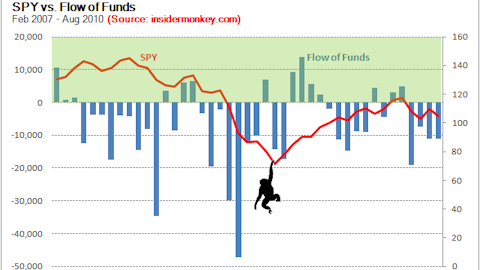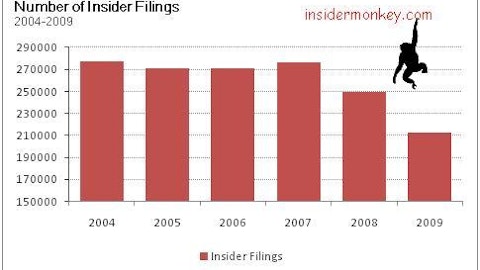 The insider trading anomaly has been one of the most profitable investment strategies in the past 50 years. In general, information is a valuable commodity. In this case, the insiders have a great deal of information, more so than do any outsiders (journalists, bloggers, etc.) or stock analysts covering the company. But just having knowledge isn’t what gives the insiders their advantage. The financial advantage comes from the prowess to derive valuation estimates based on that information. Sure, sometimes insiders make mistakes; they make the wrong assumptions or they can’t predict the effect of macro factors. But the probability that this happens and they come to the wrong conclusion is much smaller when more than one insider, acting independently, come to the same conclusion: buy, buy, buy.
The insider trading anomaly has been one of the most profitable investment strategies in the past 50 years. In general, information is a valuable commodity. In this case, the insiders have a great deal of information, more so than do any outsiders (journalists, bloggers, etc.) or stock analysts covering the company. But just having knowledge isn’t what gives the insiders their advantage. The financial advantage comes from the prowess to derive valuation estimates based on that information. Sure, sometimes insiders make mistakes; they make the wrong assumptions or they can’t predict the effect of macro factors. But the probability that this happens and they come to the wrong conclusion is much smaller when more than one insider, acting independently, come to the same conclusion: buy, buy, buy.
In other words, consensus criteria reigns king. When there is consensus among insiders (remember, who are acting independently), returns to insider trading are much higher.
Back in 1968, Professors James H. Lorie and Victor Niederhoffer had one of the earliest academic papers on profitability of insider trading (see definition of insider trading). It had a relatively proper methodology. Around the same time that economist Eugene Fama was preaching his efficient markets theory, Lorie and Niederhoffer showed that under intensive trading criteria (number of buyers is at least two more than the number of sellers or vice versa), insiders will outperform the market during the next six months.
That’s nothing to laugh at.
The studies that followed had the same purpose of testing strong and/or semi-strong forms of efficient market hypothesis, each time employing an improved methodology. Wharton professor Jeffrey Jaffe’s 1974 study didn’t find abnormal returns from the zero investment portfolio that was long in companies with more insider purchases and short in companies with more insider sales in any given month. Reducing the sample to only large transactions (at least $20,000) also didn’t change his conclusion. But when Jaffe used an intensive trading criteria – where there needed to be at least 3 buyers from each company to be included in the long portfolio and 3 sellers from each company to be included in the short portfolio – he found abnormal returns of 5.07% in the first 8 months following the transactions. When he included each company in the portfolio 2 months after the transaction, he still found abnormal returns of 4.84% in the first 8 months. His conclusion was that outsiders can also reap abnormal profits by imitating insiders.
University of Michigan’s Joseph Finnerty’s 1976 paper didn’t use any intensive trading criteria and yet concluded that insider purchases have abnormal returns of 4.1% in the first 6 months. It also concluded that insider sales have abnormal returns of -2.4% in the first 6 months. Finnerty found that half of these returns are realized within the first month. That made him refute the strong form of market efficiency but not the semi-strong form.
Read the second part of the article here: Insider Trading Anomaly, Summary of Recent Academic Studies





